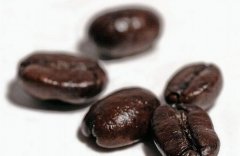The common sense of fine coffee touts the good quality of Yunnan coffee.

We often meet boastful people in coffee-growing areas in Yunnan: "our Yunnan coffee is delicious, our Yunnan coffee has won awards in the world, and our Yunnan coffee is very famous in the world." I asked them if they had had a drink. Where is it good? I can't answer. Many curry farmers mix 15% to 20% green fruit in red fruit. Can this kind of coffee taste good? This kind of coffee is only bitter when roasted. Coffee is a fruit crop. Can it be delicious without ripe green apples and bananas?
There is a saying that Yunnan coffee is called Yunnan small-grain coffee. We all know that there are three varieties of coffee, the Liberika variety is the large-grain species, the Robbda variety is the medium-grained species, and the Arabica variety is the small-grained species. There are more than 100 branches of Arabica varieties. For example, the famous bourbon and tin card species, rose summer seed, S288, SL34, while most coffee producing countries in the world use branches of Arabica varieties suitable for their respective regions to grow. If it is called Yunnan small seed coffee as Yunnan coffee does, then Brazilian coffee should be called Brazilian small seed coffee and Colombian coffee should be called Colombian small seed coffee. Guatemalan coffee is called Guatemalan small seed coffee, is this a little strange, is it a little unscientific?
Won a prize in the world: it was in the 1950s, and the winners were the old varieties bourbon and tin card, which have nothing to do with the Katim species grown on a large scale in Yunnan as raw materials for the instant coffee industry. there are also many unscrupulous businessmen who say everywhere that Yunnan coffee in China is mainly an old variety of bourbon and tin card. Where can I find a mass-produced old variety in Yunnan, China? When promoting our own Yunnan coffee in China, please do not deceive or deceive our poor Chinese consumers, because the price of their consumption of 20 or 30 yuan a cup of coffee is in line with international standards and is often higher than the coffee price of international developed countries, while the income of our poor consumers in China is several times lower than that of developed countries. So please tell them the truth and don't fool them into saying that Yunnan coffee is an old variety of bourbon and tin card. Source: Jialu Dream Coffee
Important Notice :
前街咖啡 FrontStreet Coffee has moved to new addredd:
FrontStreet Coffee Address: 315,Donghua East Road,GuangZhou
Tel:020 38364473
- Prev

It was popular to drink coffee with flowerpots in the first year of the Republic of China.
Once upon a time, when I took wedding photos, I always liked to take pictures with flowerpots. Grandparents and grandparents, what did their wedding photos look like? Zhou Shengjun, president of the Madame King Group and vice president of the Chinese Portrait Society, posted precious wedding photos of many Chinese people on his personal Weibo. He spent 15 years collecting nearly 200 wedding photos from major cities in China and even Singapore.
- Next

Introduction of Arabica coffee VS Robusta coffee
Arabica species VS Robusta species as a crop, tree species and planting environment are the basic factors for the good ring of coffee beans. At present, the coffee beans in circulation in the coffee market are Arabica (Coffea Arabica) or Robusta (Coffea Robusta). Generally speaking, Arabica coffee trees have fragile vitality and low resistance to diseases and insect pests.
Related
- Beginners will see the "Coffee pull flower" guide!
- What is the difference between ice blog purified milk and ordinary milk coffee?
- Why is the Philippines the largest producer of crops in Liberia?
- For coffee extraction, should the fine powder be retained?
- How does extracted espresso fill pressed powder? How much strength does it take to press the powder?
- How to make jasmine cold extract coffee? Is the jasmine + latte good?
- Will this little toy really make the coffee taste better? How does Lily Drip affect coffee extraction?
- Will the action of slapping the filter cup also affect coffee extraction?
- What's the difference between powder-to-water ratio and powder-to-liquid ratio?
- What is the Ethiopian local species? What does it have to do with Heirloom native species?

